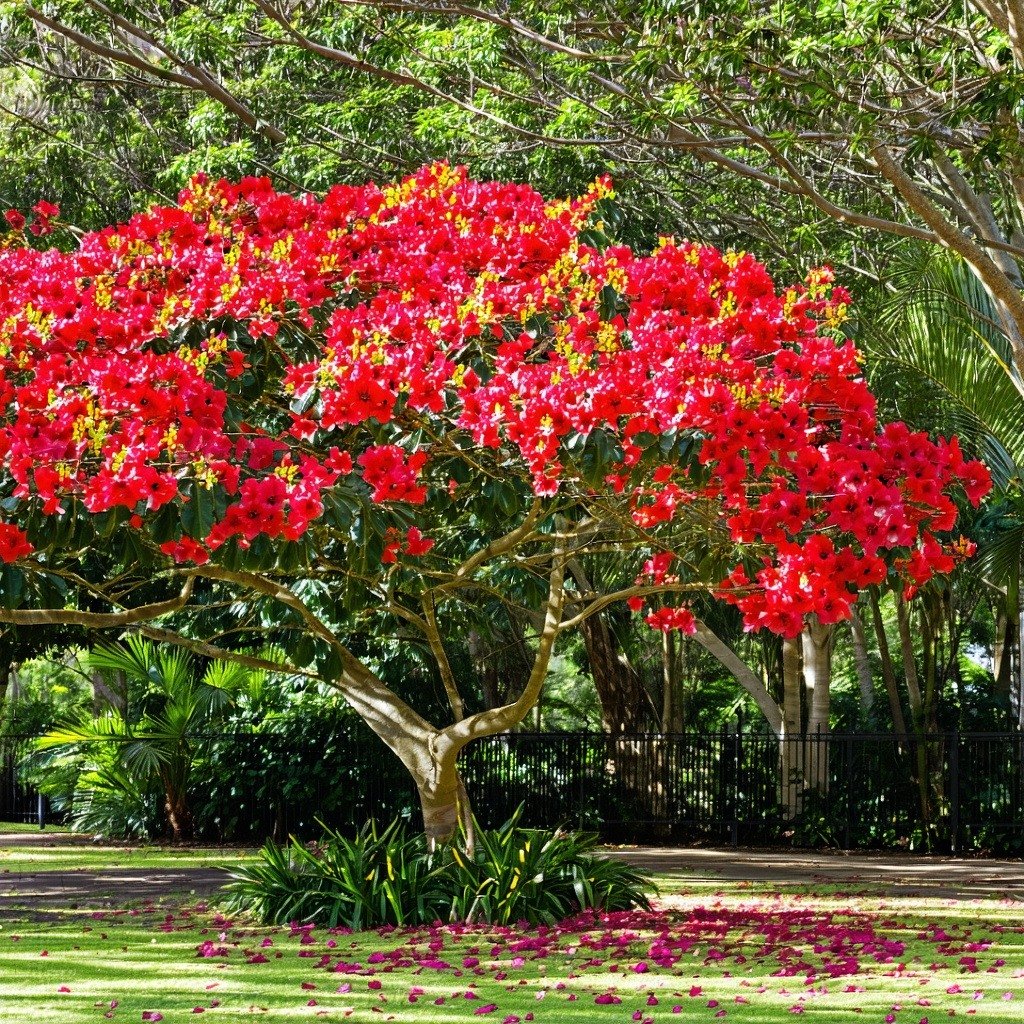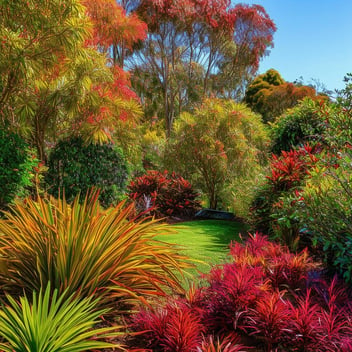Embracing Deciduous Plants in Subtropical Gardens
In the lush landscapes of subtropical regions, gardeners often gravitate towards evergreen species, overlooking the transformative allure of deciduous plants. Integrating deciduous varieties can infuse gardens with dynamic beauty, offering a tapestry of changing colors and textures throughout the year.
Understanding Deciduous Plants
Definition and Characteristics
Deciduous plants are those that shed their leaves annually, typically in response to seasonal changes. This natural cycle allows them to conserve resources during unfavorable conditions and rejuvenate with vibrant growth during favorable seasons.
Adaptations to Subtropical Climates
While commonly associated with temperate zones, many deciduous species have adapted to subtropical climates. They synchronize their growth patterns with the region's distinct wet and dry seasons, shedding leaves to withstand dry periods and flourishing during wetter months.
Benefits of Deciduous Plants in Subtropical Gardens
Seasonal Aesthetic Appeal
Deciduous plants offer a visual spectacle as they transition through seasons. Spring brings fresh, tender foliage; summer showcases lush canopies; autumn reveals a riot of colors; and winter exposes intricate branch structures, adding architectural interest.
Microclimate Regulation
The cyclical nature of deciduous plants contributes to natural climate control within the garden. In summer, their dense foliage provides cooling shade, while in winter, the absence of leaves allows sunlight to penetrate, warming the space.
Enhancing Biodiversity
These plants support diverse wildlife. Their flowers attract pollinators like bees and butterflies, while fruits provide nourishment for birds and mammals. The seasonal leaf litter enriches the soil, fostering a healthy ecosystem.
Selecting Deciduous Plants for Year-Round Interest
Flowering Trees and Shrubs
Species that produce vibrant blooms can serve as focal points, offering bursts of color that enliven the garden during specific seasons.
Foliage with Seasonal Color Changes
Plants with leaves that change hues through the seasons add depth and variety, creating a dynamic visual experience.
Fruit-Bearing Varieties
Incorporating plants that bear ornamental or edible fruits extends the garden's appeal, providing visual interest and culinary delights.
Top Deciduous Plants for Subtropical Gardens
Illawarra Flame Tree (Brachychiton acerifolius)
Renowned for its brilliant red flowers that envelop the tree in late spring to early summer, the Illawarra Flame Tree stands as a striking specimen in any garden. Its deciduous nature allows for a dramatic floral display unencumbered by foliage.
Poinciana (Delonix regia)
Often hailed as one of the most beautiful trees globally, the Poinciana boasts flamboyant scarlet blossoms that create a fiery canopy. Its broad, spreading branches offer ample shade during the hotter months.
Jacaranda (Jacaranda mimosifolia)
Celebrated for its ethereal purple blooms, the Jacaranda adds a soft, lavender haze to the landscape in spring. Its fern-like foliage provides delicate texture, and the fallen flowers create a picturesque carpet beneath the tree.Frangipani (Plumeria spp.)
With fragrant, waxy flowers in a spectrum of colors, Frangipani trees evoke a tropical ambiance. Their sculptural branches and sparse canopy allow for underplanting with shade-tolerant species.
Tabebuia (Tabebuia spp.)
These trees dazzle with trumpet-shaped flowers in shades of pink, purple, or yellow, depending on the species. Their brief but spectacular blooming period heralds the onset of spring.
Planting and Maintenance Tips
Site Selection and Soil Preparation
Choose planting sites that align with each species' light and space requirements. Ensure the soil is well-draining and enriched with organic matter to support healthy root development.
Pruning and Pest Management for Deciduous Plants in Subtropical Gardens
Pruning Techniques
Pruning is essential for the health and aesthetics of deciduous plants. In subtropical regions like South East Queensland, the optimal time for pruning varies by species. Generally, pruning during the cooler months of winter and early spring allows for faster healing and minimizes disease risk. For flowering trees, it's advisable to prune after they finish blooming to preserve next season's flowers. Proper pruning enhances air circulation and light penetration, reducing disease incidence and promoting vigorous growth.
Pest and Disease Management
Deciduous plants may encounter pests such as borers, aphids, and diseases like powdery mildew. Regular inspections facilitate early detection, allowing for prompt intervention. Implementing integrated pest management (IPM) strategies, including encouraging beneficial predators and applying targeted treatments when necessary, helps maintain plant health.
Designing with Deciduous Plants
Creating Focal Points
Strategically placing deciduous plants can draw attention to specific areas of the garden. Their seasonal transformations provide dynamic visual interest, making them ideal centerpieces in landscape design.
Combining with Evergreen Species
Integrating deciduous plants with evergreens ensures year-round appeal. While evergreens provide constant structure and color, deciduous plants contribute seasonal variety, resulting in a balanced and engaging composition.
Seasonal Planning for Continuous Interest
By selecting a variety of deciduous species with staggered blooming and foliage cycles, gardeners can achieve continuous visual interest throughout the year. This approach ensures that as one plant's display wanes, another's begins, maintaining a vibrant garden landscape.
Integrating Deciduous Plants for a Dynamic Subtropical Garden
Incorporating deciduous plants into subtropical gardens enriches the landscape with seasonal diversity, aesthetic beauty, and ecological benefits. Through thoughtful selection, proper care, and strategic design, these plants can transform gardens into dynamic spaces that evolve gracefully with the seasons.




